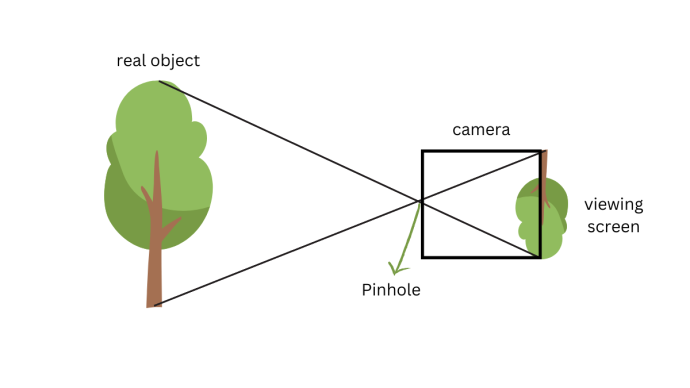All of the light we receive on Earth comes from the Sun. The light from the Sun is so bright that we cannot directly look at it, even during an eclipse. If we did look at the Sun, the light would damage our eyesight and could lead to blindness. Instead, we need to use equipment to observe the Sun. Some equipment, like hydrogen filters, can be added to telescopes, but others can be cheap and easy to make at school or at home!
In this activity, you will make and use a pinhole camera. You can use this tool to view sources of light without damaging your eyes. Light from a source enters the pinhole and is projected onto the viewing window. You can use it to view the Sun (through the camera at arm’s length) or other light sources like lamps.
When you look through the pinhole camera viewing window, you will notice that the object you are looking at is upside down. This happens because light travels in a straight line from the object, through the hole, and to the screen. Light from the top of the object travels down to the bottom of the screen, and light from the bottom travels up to the top, creating an inverted image. The same happens inside our eyes, but our brain learns to flip these images the right way round to make sense of the world.
By the end of this activity you will:
- Have made your own pinhole camera
- Have made observations of different objects using the camera
- Understand more about light, its dangers and how it travels
To complete this activity you will need:
- A shoe box or long cardboard tube
- Scissors or crafting knife
- A ruler
- A light source to look at (e.g., a lamp or the Sun)
- Aluminium foil
- A pin
- Sticky tape
- Thin paper or baking paper

